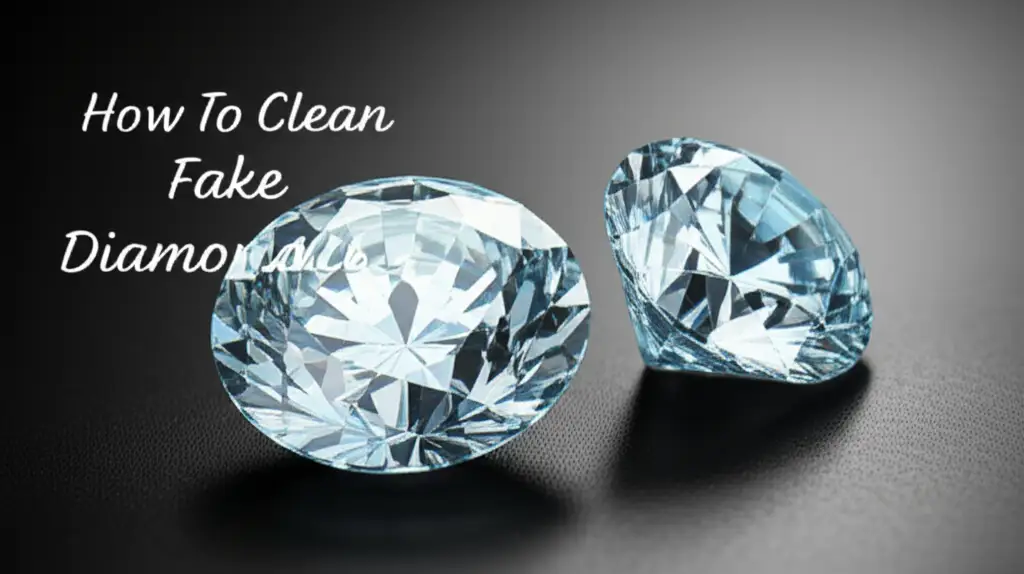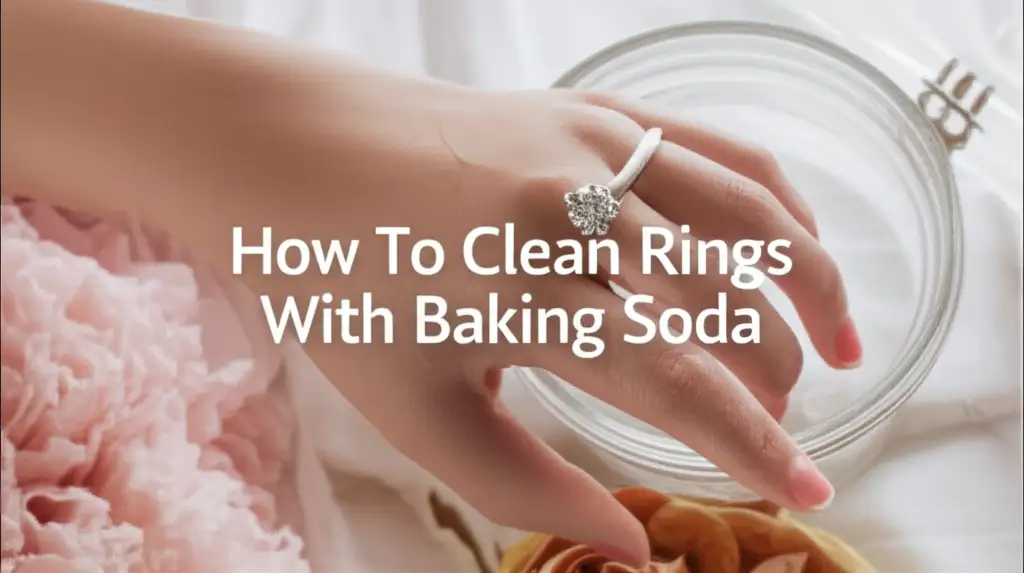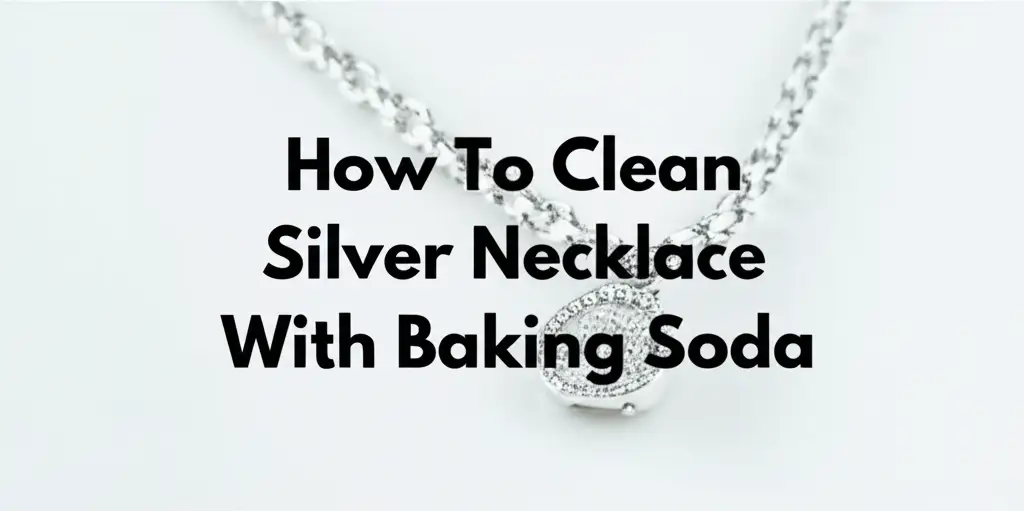· Jewelry Care · 14 min read
How To Clean Fake Diamonds

How to Clean Fake Diamonds: Restore Their Sparkle at Home
Fake diamonds, like cubic zirconia, moissanite, or glass, add beautiful sparkle without the high cost of real diamonds. Over time, these imitation gems can lose their luster. Dirt, oils from your skin, and residue from lotions or perfumes build up on their surfaces. Learning how to clean fake diamonds properly brings back their original shine. This guide will show you simple, safe, and effective ways to clean your treasured costume jewelry. I will walk you through the best methods, essential supplies, and important tips for maintaining their brilliance.
Takeaway
- Use mild soap and warm water for basic cleaning.
- Gently scrub with a soft brush, like a toothbrush.
- Rinse thoroughly under cool running water.
- Dry completely with a lint-free cloth.
- Avoid harsh chemicals or abrasive materials.
To clean fake diamonds, mix a few drops of mild dish soap with warm water. Soak the jewelry for 10-15 minutes, then gently scrub with a soft-bristled toothbrush. Rinse under cool water and dry with a soft, lint-free cloth to restore shine and remove dirt.
Understanding Fake Diamonds and Why They Get Dirty
Many people enjoy wearing fake diamonds, also known as simulated diamonds or costume jewelry. These stones replicate the look of natural diamonds without the significant expense. Common materials include cubic zirconia (CZ), moissanite, glass, and synthetic spinel. Each material has its unique properties, but all share a common problem: they attract dirt and grime.
Daily wear exposes your fake diamonds to various substances. Skin oils, makeup, lotions, and dust stick to the stone’s surface and its metal setting. This buildup creates a film that dulls the brilliance and sparkle of the gem. Hard water deposits can also leave unsightly spots. Over time, this makes your beautiful jewelry look cloudy and unappealing. Regular cleaning is crucial to keep these pieces looking their best.
Fake diamonds do not scratch as easily as some other materials, but they still need gentle care. Unlike real diamonds, which can withstand harsher cleaning methods, imitation stones are often set in less durable metals. These metals, like plated brass or sterling silver, can tarnish or corrode if exposed to strong chemicals. Therefore, selecting the right cleaning method is important to protect both the stone and its setting. We aim to remove dirt without causing damage.
Understanding the material of your fake diamond helps choose the best cleaning approach. Most general methods work well for all types. However, some delicate pieces, especially those with glued-in stones or antique settings, require extra caution. Always prioritize gentle techniques to preserve the integrity of your jewelry.
Essential Cleaning Supplies for Fake Diamonds
You do not need many special tools to clean fake diamonds. Most items you need are probably already in your home. Gathering these supplies before you start makes the cleaning process smooth and efficient. Using the right tools ensures you clean your jewelry effectively without causing any damage. I find these simple supplies work wonders.
First, you will need a small bowl or container. This holds your cleaning solution and allows you to soak your jewelry safely. Choose a non-porous material, such as glass or plastic. Next, get a mild dish soap. Look for a brand that is gentle and does not contain harsh detergents, dyes, or perfumes. These extra ingredients can leave residue or harm delicate metals.
A soft-bristled toothbrush is essential for scrubbing. An old, clean toothbrush works perfectly. Make sure its bristles are soft enough not to scratch the surface of your fake diamond or its setting. You will also need a soft, lint-free cloth for drying and polishing. Microfiber cloths are ideal because they absorb water well and do not leave fibers behind. A soft cotton cloth can also work.
Finally, prepare some warm water. Distilled water is best, as it prevents mineral deposits from hard water. However, tap water is usually fine for most cleaning tasks. If your tap water is very hard, consider using filtered or distilled water for the final rinse. These basic supplies form the foundation of a safe and effective cleaning routine for your fake diamonds.
- Small Bowl: A clean glass or plastic bowl for soaking.
- Mild Dish Soap: Gentle, clear dish soap without harsh chemicals.
- Soft-Bristled Toothbrush: An old, clean toothbrush or a dedicated jewelry brush.
- Lint-Free Cloth: Microfiber or soft cotton cloth for drying and polishing.
- Warm Water: Preferably distilled or filtered water.
Step-by-Step Cleaning Method for Sparkling Fake Diamonds
Cleaning your fake diamonds is a simple process that anyone can follow. I will guide you through each step to ensure your jewelry regains its beautiful sparkle. This method is gentle yet effective, suitable for most types of costume jewelry. Follow these instructions carefully for the best results.
First, prepare your cleaning solution. Fill your small bowl with warm water. Add one or two drops of mild dish soap to the water. Gently swirl the water to mix the soap. You want a very dilute, bubbly solution, not a concentrated soap bath. Avoid using too much soap, as it can leave a film.
Next, place your fake diamonds into the soapy water. Let them soak for about 10 to 15 minutes. This soaking time helps loosen dirt, oils, and grime that have built up on the stones and metal. For very dirty items, you can extend the soaking time slightly, up to 30 minutes, but avoid leaving them for hours.
After soaking, take a soft-bristled toothbrush. Gently scrub the surface of the fake diamond, paying close attention to the facets and any crevices where dirt might hide. Also, gently brush the metal setting around the stone. This ensures you remove all loosened debris. Be careful not to apply too much pressure, especially on delicate settings.
Once scrubbed, rinse the jewelry thoroughly under cool, running water. Make sure to rinse away all soap residue. Any leftover soap will dry and create a dull film on your jewelry. You can hold the jewelry under a faucet or rinse it in a separate bowl of clean water. For safety, place a stopper in the sink drain before rinsing. If you want to clean glass surfaces around your home, a similar gentle approach with vinegar can also work wonders, as discussed in how to clean glass with vinegar.
Finally, dry your fake diamonds completely with a lint-free cloth. Pat them gently to absorb moisture. Then, use the cloth to buff the stone and metal setting to a brilliant shine. Ensure no water spots remain, as these can dull the sparkle. Your fake diamonds will now look as good as new, sparkling beautifully once again.
Tackling Stubborn Grime and Tarnish on Imitation Gems
Sometimes, mild soap and water are not enough to remove all dirt. Fake diamonds, especially those in plated metal settings, can accumulate stubborn grime or even show signs of tarnish. Tarnish usually affects the metal part of the jewelry, not the stone itself. I have found a few gentle tricks for these tougher situations. Always test any new cleaning method on an inconspicuous area first.
For persistent grime on the fake diamond itself, you can try a slightly stronger soak. Instead of just water and soap, you can add a tiny amount of ammonia-free glass cleaner to the soapy water. Mix this very well. Soak the jewelry for a shorter period, perhaps 5-10 minutes. Ammonia can be harsh on certain metals, so use it sparingly and ensure it is ammonia-free if your jewelry has softer metals. Rinse thoroughly afterwards.
Tarnish on the metal setting is a common issue with costume jewelry. A simple solution for this is a paste made from baking soda and water. Mix a small amount of baking soda with just enough water to create a thick paste. Apply this paste gently to the tarnished metal using a soft cloth or a cotton swab. Rub gently, then rinse thoroughly. This method works well for many plated metals. For cleaning other metallic surfaces like stainless steel, similar gentle abrasive pastes or specific cleaners are effective, as detailed in how to clean stainless steel.
Another option for stubborn spots, especially on harder imitation stones like cubic zirconia, is a very dilute vinegar solution. Mix equal parts white vinegar and water. Soak the piece for only a few minutes, then scrub gently. Rinse immediately and thoroughly. Vinegar is an acid, so it should not sit on the metal for too long. This method is more suitable for the stone itself rather than very delicate metal settings. Always ensure a quick rinse to prevent any etching or damage.
Remember, the goal is always gentle cleaning. Avoid abrasive scrubbers or harsh chemical jewelry cleaners, especially those designed for real diamonds. These can strip plating, dull the finish, or even loosen stones. If your jewelry is very old or delicate, consider consulting a professional.
Proper Care and Maintenance Tips for Fake Diamonds
Cleaning your fake diamonds is only part of keeping them beautiful. Proper care and maintenance ensure their sparkle lasts longer between cleanings. I always follow a few simple rules to protect my costume jewelry. These habits prevent damage and reduce the frequency of deep cleaning.
First, always put on your fake diamonds last, after applying makeup, hairspray, perfumes, and lotions. These products contain chemicals that can dull the stone’s surface or react with the metal setting. Direct contact with these substances can cause residue buildup or even tarnish. Letting your skin absorb lotions or perfumes fully before wearing jewelry helps a lot.
Second, remove your fake diamonds before doing any chores, exercising, or swimming. Household cleaners, chlorine from pools, and even sweat can damage both the stone and the metal. The chemicals can cause discoloration or weaken the settings. Physical activity also increases the risk of scratching or accidental breakage. I always take my rings off before washing dishes or going to the gym.
Third, store your fake diamonds properly. Store them separately in a jewelry box or soft pouch. This prevents them from scratching against other pieces of jewelry. Exposure to air and humidity can also cause metal settings to tarnish more quickly. Keeping them in an airtight bag can further slow down tarnishing. Proper storage helps maintain their shine and prevents physical damage.
Finally, consider a quick wipe-down after each wear. Use a soft, lint-free cloth to gently wipe the stone and setting. This removes oils and light dirt before they have a chance to build up. This simple habit makes a big difference in maintaining their sparkle. Regular light cleaning is much easier than tackling heavy grime later on.
What to Avoid When Cleaning Fake Diamonds
While it is important to clean your fake diamonds, knowing what not to do is equally critical. Using the wrong methods or products can cause permanent damage to your beautiful costume jewelry. I have learned through experience that some common cleaning misconceptions can ruin these pieces. Avoid these practices to keep your fake diamonds safe.
First, do not use harsh chemicals. This includes ammonia-based cleaners, bleach, acetone, or abrasive household cleaners. These strong chemicals can damage the metal plating, corrode glues that hold stones in place, or even dull the surface of certain imitation gems. Always opt for mild soap and water. Harsh chemicals are often overkill and risky, even when cleaning other synthetic surfaces like a plastic shower, where gentler methods are preferred.
Second, avoid using abrasive materials. This means no rough cloths, scouring pads, or abrasive pastes. These can scratch the surface of your fake diamond, making it appear dull and cloudy. They can also scratch or remove the plating from the metal setting. Stick to soft-bristled brushes and lint-free cloths.
Third, be very cautious with ultrasonic cleaners. While effective for real diamonds, ultrasonic cleaners can be too aggressive for fake diamonds. The vibrations can loosen stones that are glued in or set with weak prongs. They can also damage the plating on costume jewelry. Unless your jewelry is specifically designed to withstand ultrasonic cleaning, it is best to avoid it.
Fourth, do not soak your fake diamonds for too long, especially if they have glued settings or delicate materials. Prolonged exposure to water can weaken adhesives, causing stones to fall out. It can also cause some metals to discolor or rust. Short, targeted soaks are always better.
Finally, never use extremely hot water. Hot water can sometimes expand the metal setting, potentially loosening stones. It also poses a risk of burns to you. Stick to warm or cool water for cleaning. Following these “don’ts” helps ensure your fake diamonds remain intact and beautiful for a long time.
Comparing Fake vs. Lab-Created Diamond Cleaning
Many people confuse fake diamonds with lab-created diamonds, but they are very different in terms of cleaning. Understanding this distinction is key to proper care. Fake diamonds are simulants, meaning they look like diamonds but are made of different materials, such as cubic zirconia or glass. Lab-created diamonds, on the other hand, are real diamonds. They possess the same chemical, physical, and optical properties as natural diamonds, just grown in a laboratory.
The main difference in cleaning lies in the material’s hardness and durability. Real diamonds, whether natural or lab-created, are the hardest known mineral. They can withstand more robust cleaning methods, including ultrasonic cleaners and stronger jewelry cleaning solutions. Their settings are often made of precious metals like gold or platinum, which are also more durable. If you own lab-created diamonds, you can learn more about their specific care in our guide on how to clean lab-created diamonds.
Fake diamonds, being softer and often set in less expensive, more delicate metals, require a gentler approach. The mild soap and water method is always the safest bet. They can be scratched more easily than real diamonds. Their settings, often plated metals, are susceptible to damage from harsh chemicals, tarnish, and prolonged moisture. The glues holding some imitation stones can also degrade.
In summary, treat your fake diamonds with much more care than you would a natural or lab-created diamond. Avoid harsh abrasives, strong chemicals, and aggressive cleaning devices like ultrasonic cleaners. While lab-created diamonds share the durability of natural diamonds, fake diamonds do not. This distinction guides your cleaning choices, ensuring your beautiful imitations stay brilliant without damage. Always remember, gentleness is key for your fake diamonds.
Frequently Asked Questions
Can I use toothpaste to clean fake diamonds?
No, it is best to avoid using toothpaste. Toothpaste contains abrasive particles that can scratch the surface of fake diamonds and their metal settings. These scratches will dull the stone’s shine over time. Stick to mild soap and water for safe and effective cleaning.
How often should I clean my fake diamonds?
The frequency depends on how often you wear them. If you wear them daily, a quick wipe with a soft cloth after each use is good. A more thorough cleaning with soap and water every two to four weeks is usually sufficient to maintain their sparkle and prevent dirt buildup.
Can I use an ammonia-based cleaner on fake diamonds?
You should generally avoid ammonia-based cleaners. While some might use a very diluted solution for specific stones, ammonia can be harsh on the metal settings of costume jewelry. It can also degrade glues used to set stones. Mild dish soap and water are much safer.
Will cleaning solutions damage the metal setting of my fake diamonds?
Harsh cleaning solutions, like bleach or strong chemicals, can definitely damage the metal setting, especially if it’s plated. They can strip the plating, cause discoloration, or accelerate tarnishing. Always use very mild, non-abrasive solutions to protect both the stone and the setting.
My fake diamond has lost its sparkle even after cleaning. What’s wrong?
If your fake diamond still lacks sparkle, it might have surface scratches or the metal setting could be heavily tarnished or damaged. Scratches cannot be easily removed at home. For heavily tarnished metal, a gentle polish designed for the specific metal type might help, but sometimes the damage is permanent.
Is it okay to use an ultrasonic cleaner for fake diamonds?
It is not recommended to use an ultrasonic cleaner for most fake diamonds. The intense vibrations can loosen stones, especially if they are glued into their settings. It can also cause damage to delicate metal platings. Stick to hand cleaning with a soft brush and mild solutions.
Conclusion
Keeping your fake diamonds sparkling bright does not require expensive tools or harsh chemicals. You now know that simple household items and a gentle approach are all you need. By regularly cleaning your cubic zirconia, moissanite, or other imitation gems with mild soap and water, you can easily maintain their brilliant luster. Remember to handle your pieces with care and always dry them thoroughly.
Following these tips on how to clean fake diamonds ensures your costume jewelry remains beautiful for years to come. Proper storage and avoiding contact with lotions and perfumes also play a big role in their longevity. With a little effort, your imitation diamonds will continue to catch the light and add elegance to your look. Start cleaning your fake diamonds today and let them shine!
- Costume Jewelry
- Cubic Zirconia Cleaning
- Simulated Diamonds
- Jewelry Care
- DIY Cleaning
- Gemstone Cleaning
- Accessory Maintenance




